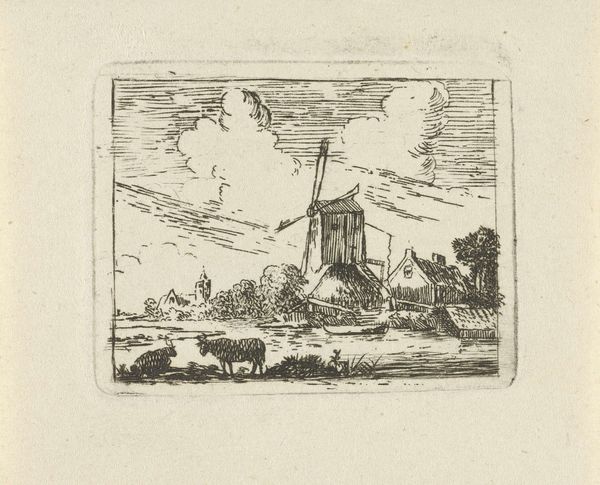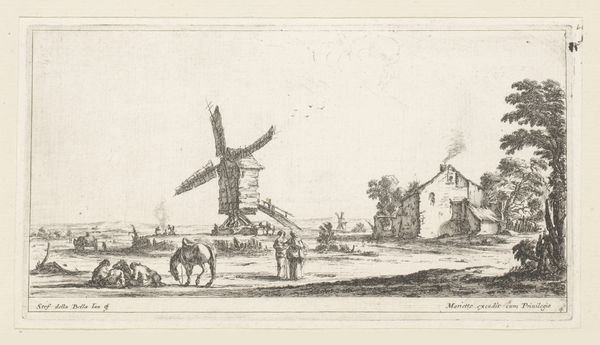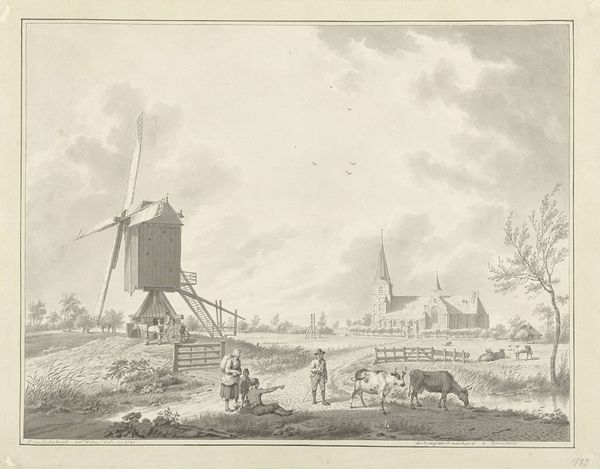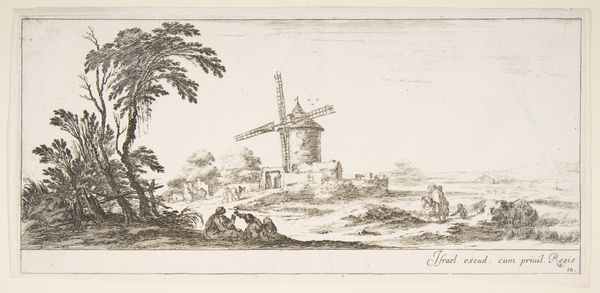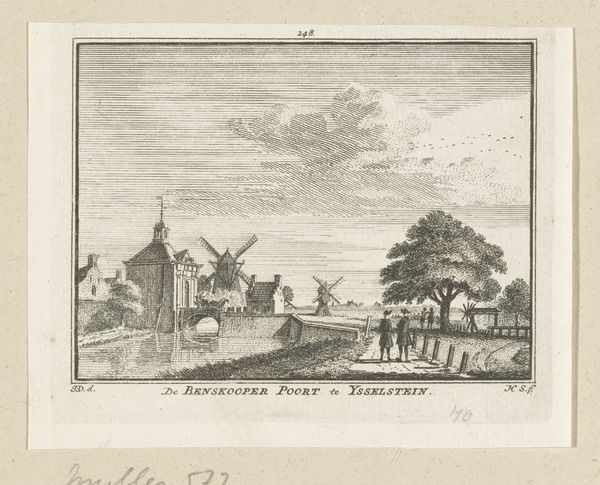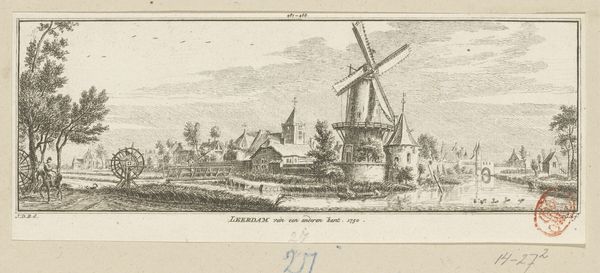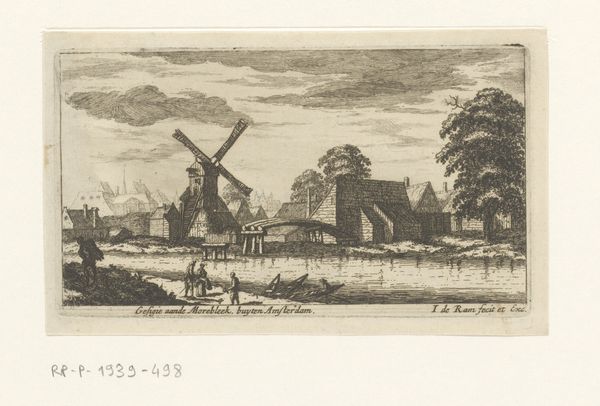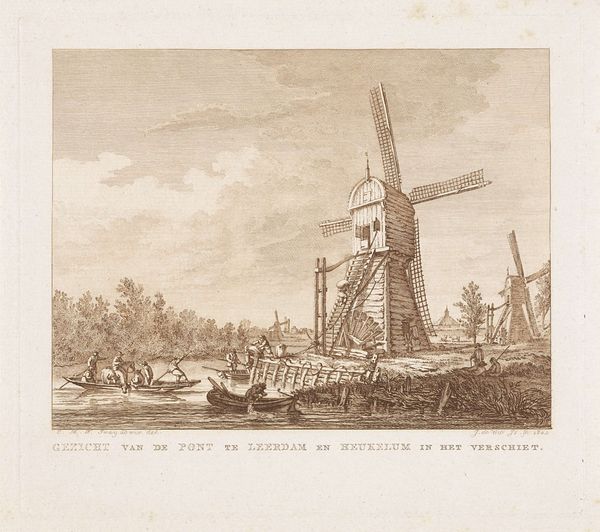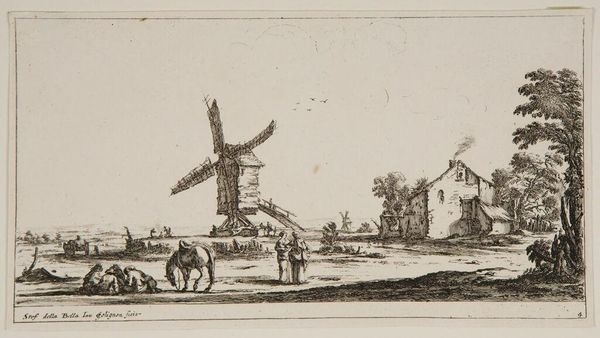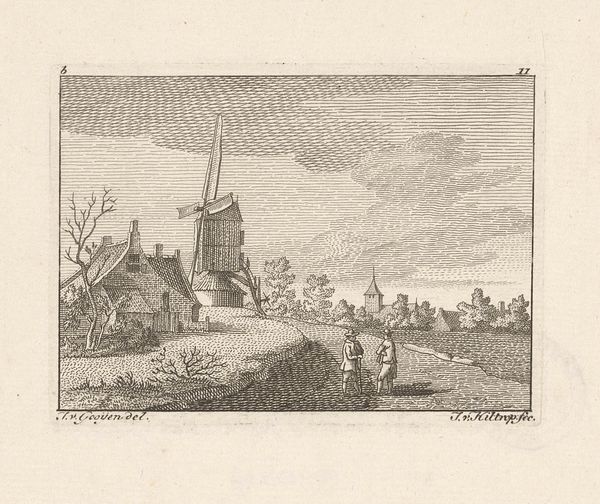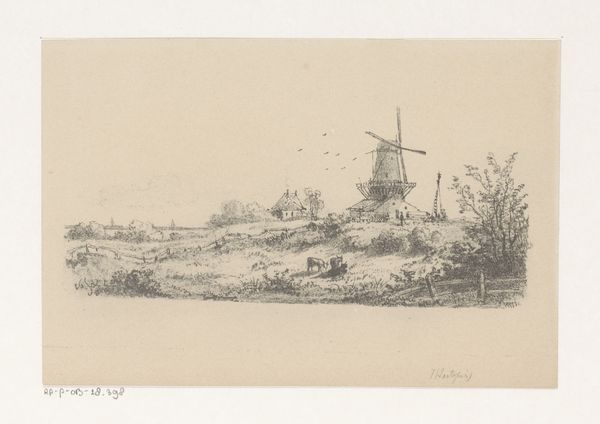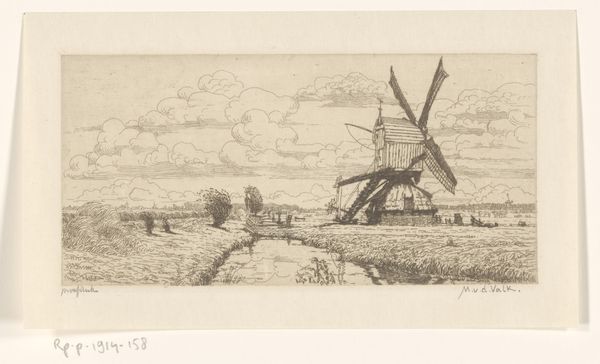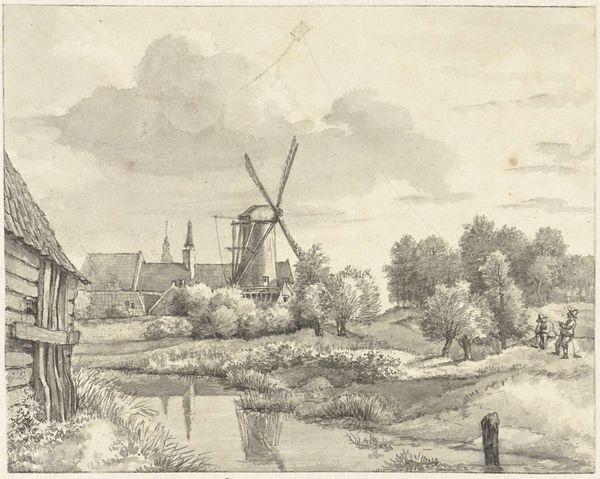
print, engraving
# print
#
old engraving style
#
landscape
#
romanticism
#
engraving
Dimensions: height 244 mm, width 312 mm
Copyright: Rijks Museum: Open Domain
Curator: This is "Hoeve in Mont-Saint-Jean," a print made by V. Lignian sometime between 1820 and 1850, rendered in engraving. Editor: It feels so idyllic, doesn’t it? A windmill dominates the scene, softened by that misty light and the diminutive figures along the path. The lines are incredibly precise; I’m struck by the meticulous details, especially in the depiction of the stone. Curator: The windmill itself acts as a powerful symbol, embodying a sense of progress and ingenuity transforming the rural landscape. We see that tension played out even further through the Romantic lens; think about what it represented as the backdrop of labor. Editor: True, but look at how Lignian balanced light and shadow. See how that light pours through the sky? It’s divided quite carefully. It creates depth but also emphasizes that flatness of the picture plane. It is about illusion. Curator: Engravings often carry loaded implications about the status and order of society, though here there seems a certain harmony, maybe a romanticized one, that speaks of stability and continuity, the human figures along a shared thoroughfare as they lead livestock forward. Editor: Yes, and if you observe closely, it is an interplay between sharp and blurry forms. Those hard edges really catch the eye near the foreground while things fade into the distance – perhaps contributing to that dreamy sentimentality? Curator: I think that hazy quality, created through a delicate engraving, allows it to carry an almost dreamlike state, invoking associations with idealized notions of landscape and home. This recalls traditions tied directly with industry. Editor: It’s remarkable how this seemingly simple landscape manages to be simultaneously calming and filled with historical implications just beneath the surface. I think there is something profoundly complex about a formal exercise like this. Curator: I agree, understanding its function and how we read into images gives us valuable tools to approach and contextualize imagery of any time period. Editor: Definitely, I feel like it helped me to realize and appreciate how technique functions as a bridge between visual appearance and thematic resonance.
Comments
No comments
Be the first to comment and join the conversation on the ultimate creative platform.
